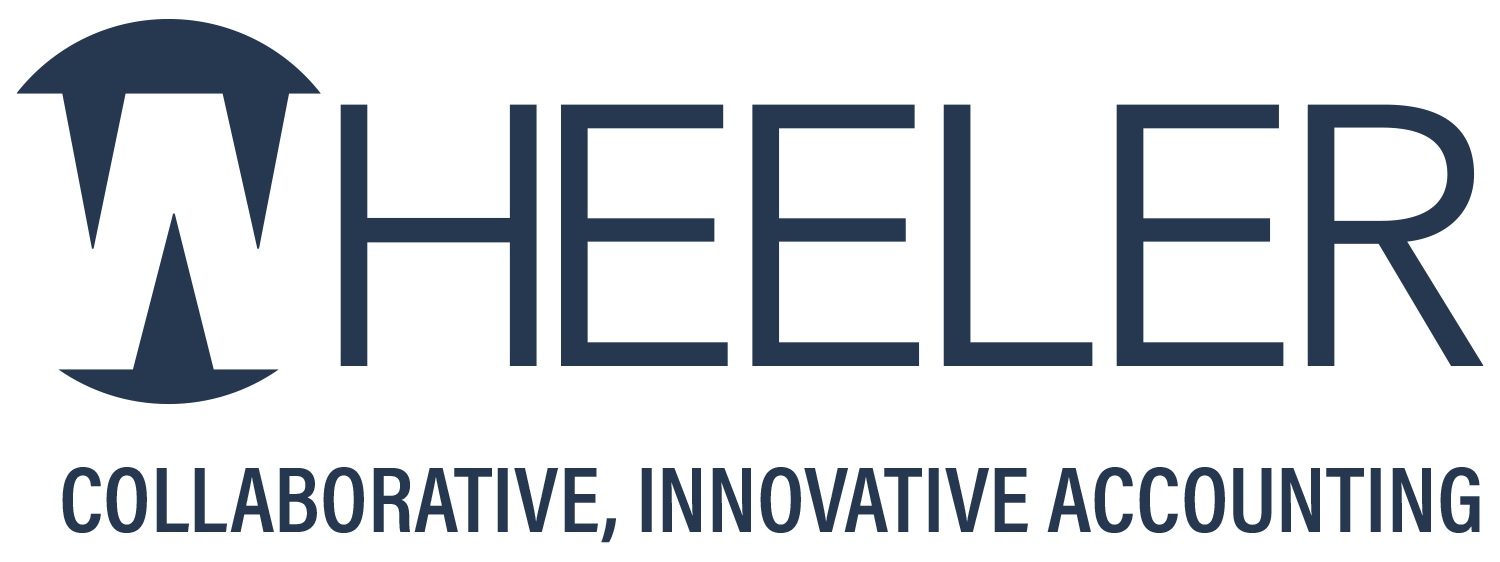
By Matt Wheeler
Over the past decade, Americans have been the most generous people in the world. [1] This year, despite economic devastation caused by the Coronavirus pandemic, charitable giving had actually increased as of June by 7.5% year over year, according to the Q2 report released by the Fundraising Effectiveness Project. [2] What’s more, the number of “general donor” small gifts under $250 is up 19.2% year-to-date! These statistics contrast sharply with the narrative of ever-increasing divisiveness and animosity repeated in the months leading up to the November election. One thing is clear—in times of need, Americans help each other.
If you participated in charitable giving this year, or plan to, we want to provide you with tools and techniques to maximize the tax benefits of your gifts. Giving can take the form of time or money, and can be to family, friends, strangers, or organizations, but the US tax code only recognizes gifts of money or other property, and only when donated to qualifying 501(c)(3) charitable organizations. While we don’t want the tax tail to “wag the dog” as you develop your giving strategy, it is important to be tax-aware and tax-efficient in your charitable giving, if for no other reason than to minimize your tax liability legally, which will leave you with even more assets available for future generosity.
First, we will cover techniques for optimizing your current giving. Second, we will discuss tactical timing considerations for the short- to medium-term, and some helpful tools. Finally, we will touch on longer-term and more substantial giving strategies as part of your overall estate plan.
OPTIMIZING YOUR CURRENT CHARITABLE GIVING
Gifting Appreciated Property
The number one opportunity for gifting optimization that we encounter on a regular basis is converting cash donations to tax-efficient donations of appreciated property. Gifting cash to a 501(c)(3) charity is one of the least-efficient ways to conduct your charitable giving. Donating cash is, for the most part, a gift of after-tax money. Most taxpayers, when they receive cash—whether it be from compensation for services, the sale of assets, or portfolio or rental income—have already paid tax on it to the government. Yes, there are some tax-free sources of cash, but these are rare. That being the case, a tax-deductible donation can be made more tax-efficient by donating an appreciated asset that has been held long-term, such as equity securities or mutual funds.
Donating appreciated property held for more than one year yields a rare double benefit in the tax code. Upon donation of the appreciated asset, the donor receives a charitable deduction for the current fair market value of the property on the date of the donation. Furthermore, the donor does not recognize any taxable income on the built-in gain of the asset on donation. Thus, the taxpayer effectively gives the asset pre-tax and achieves a full-value deduction as well.
Example: Tax Rate Arbitrage
A simple example illustrates the point: Assume a stock with a value of $100 and an income tax basis of $25. The unrealized gain is $75. Selling the stock with a combined federal and state income tax rate of 25% would result in capital gains taxes of $18.75. The sales proceeds received, net of taxes, would be $81.25. The charity would then receive a donation of $81.25 and the taxpayer would receive a tax benefit of $24.38 at a 30% combined federal and state tax rate.
Consider instead if the taxpayer donates the stock directly to the charity. In this case, the charity would receive a stock worth $100 which it could then sell, tax-free, and receive $100 of cash. The taxpayer would likewise receive a charitable deduction totaling $100, the current fair value of the shares, and would receive an income tax benefit of $30 at a 30% combined federal and state tax rate. By donating the appreciated securities rather than donating cash, the charity ends up with an additional $18.75 and the taxpayer ends up with an additional $5.62. The only party losing out here is the government.
Qualified Charitable Distributions
For taxpayers over age 70 ½ another tax efficient means of donating is to donate cash directly from the IRA account to a qualifying 501(c)(3) charity in a Qualified Charitable Distribution.
Qualified Charitable Distributions (QCDs) can be used to satisfy minimum required distribution amounts. The main benefit of a QCD is that any qualifying distribution will reduce income recognized from the distribution dollar for dollar. While it might seem logical that the same effect could be achieved by receiving a distribution from the IRA account and then forwarding on the cash to a qualifying charity, this is not necessarily the case. For taxpayers currently itemizing their deductions and receiving full benefit of charitable contributions already, this is still not quite as tax efficient as the direct QCD.
Many calculation on the tax return, including the amount of social security that is recognized as taxable income as well as the amount of medical expenses that may be deducted in a given year, are a function of the amount of Adjusted Gross Income (AGI) a taxpayer has. A dollar of charitable contribution does not necessarily have the same impact in reducing taxable income as a direct reduction of income by a dollar “above the line”. By reducing income dollar for dollar via a QCD, a taxpayer can reduce AGI and thus may receive additional benefits by reducing the amount of Social Security that is taxable or increasing the amount of allowable medical expenses, or numerous other calculations impacted by AGI.
The impact of this strategy is even more profound for taxpayers who take the standard deduction or do not itemize deductions. These individuals receive little to no tax benefit from donating cash or appreciated property to charity personally but receive the full benefit if they donate directly from their IRA using a qualifying distribution.
CARES Act Deduction
Another technique available for 2020 as a result of the CARES Act passed in the spring is that all taxpayers who take the standard deduction will be permitted an “above the line” deduction for qualifying cash donations made to charities of up to $300.
SHORT- AND MEDIUM-TERM CHARITABLE GIVING STRATEGIES
If you’ve come this far, you should be planning to take our advice to maximize the tax efficiency of your charitable giving—perhaps you are already doing so! Next, we will discuss timing considerations for short- and medium-term time horizons for charitable giving. Our primary goal is to minimize the taxes you pay over your entire lifetime, not to merely focus on the year to year tax consequences of transactions you undertake. The timing of a charitable deduction you take can be a key factor in determining the tax savings you receive.
Example: The “Income Spike”
Let’s assume you are having a great income year: you received an especially large bonus, cashed out some stock, or sold some other assets, pushing you a bracket or two higher than where you normally wind up. This year you have an “income spike”. While this is a first-class problem to have, it is still a problem. An income spike is not tax efficient. The incremental increase in your income this year is subject to a higher tax rate than it otherwise would be if spread out over a few years, or perhaps even if it was paid next year.
Let’s further assume you are getting cashed out of a large amount of stock and will be retiring next year, expecting a substantial drop in income for at least several years. If your bracket is a combined federal and state rate of 40% in the high-income year and a combined federal and state rate of 25% in the lower-income years, then you are being taxed an extra 15% on that incremental income in the high-income year. Further, a deduction in the low-income years yields you a 25% tax savings while that same deduction in the high-income year may yield you a 40% tax savings! So, for a $100 charitable donation, you save an additional $15 by claiming the deduction in the high-income year as opposed to the lower income year.
One solution to this dilemma is to simply increase your charitable giving substantially in the high-income year as opposed to the lower income years. In many ways, however, this is not desirable—you have now set the bar much higher for your giving to the charity in the high-income year. Imagine the disappointment when you tell them you are scaling back the giving the following year! The better solution is to separate the timing of the charitable deduction for income tax purposes from the charity’s actual receipt of the gift. To do this efficiently, we recommend the use of a Donor Advised Fund.
Donor Advised Funds
A Donor Advised Fund (DAF) is an account setup with a custodian (most major brokerages have versions of this) which is set aside permanently for charitable purposes.
- Gifts made to the account are irrevocable—you may not claim the money back, and
- Any money inside the account must be distributed to qualifying 501(c)(3) charities
Because of the irrevocable nature of the gifts to the account, and the requirement that any assets in the account be distributed only to qualifying charities, the IRS permits you a charitable deduction upon your gift to the account. This allows the donor to have full control over the timing of the charitable gift, which is a key advantage in the examples described above.
Now in your income spike year, you can increase your charitable giving via the DAF, thus maximizing your tax benefit, while not increasing your annual giving to the charities you have in mind. Because you receive a charitable deduction when the account is funded, no additional contribution deduction is recognized when the assets are transferred to charity.
The DAF also has the added practical benefit of being an easy vehicle by which to transfer appreciated securities. While you can donate appreciated securities direct to a qualifying charity, it often involves complexities like substantial paperwork and identification of specific lots of shares. But when using a DAF, most major brokerages make it a simple and seamless process that can be done entirely online. When the gift is finally made to the charity from the DAF, the charity receives a check, meaning less paperwork on the charity’s end as well.
For all these reasons, we regularly recommend the use of a DAF in conjunction with other tax-efficient strategies to maximize the tax-efficiency of your charitable giving.
LONG-TERM CHARITABLE GIVING STRATEGIES
We have now covered some tax efficient tactical techniques for making charitable donations as well as taking advantage of tax-rate arbitrage opportunities with short to medium term considerations in mind. The final techniques relate to the big picture—long-term planning for charitable giving and philanthropic endeavors as part of a broader estate plan.
There are numerous tools available to taxpayers who seek to be tax efficient in their giving. You can keep things simple or get as complicated as you want. With increased complexity you can often obtain increased tax efficiency, but typically at a much higher price in terms of rules, record keeping, and of course, fees to the attorneys, accountants and financial advisors assisting you. Before getting too into the weeds on technical complexities, approach the broader philosophical considerations first:
- How much do you wish to leave to your heirs?
- What do you want your legacy to be?
- Do you wish to remain Anonymous in your giving?
- Do you wish to build a family legacy of giving and philanthropy?
These questions are uniquely personal in nature and you should reflect on them with your loved ones and trusted advisors.
Inter Vivos Gifting
There can be numerous tax advantages to “bringing forward” legacy gifting plans by making inter vivos gifts during life.
Consider the taxpayer that wishes to leave 25% of their $10M estate to charity. That is an extremely generous $2.5M gift to charities of the taxpayer’s choosing. However, at current estate tax exemption amounts, for a married couple, there is no estate tax benefit to the gift as there would be no estate tax otherwise due. Further, there would be minimal, if any, income tax benefit, as all assets generally under current law would receive a “step up” in income tax basis upon death.
Instead, consider if this gift was spread over a number of years prior to death. Current income tax benefits could be obtained by such gifts, as well as the satisfaction of seeing them put to use. A proper plan to shift this gifting forward could yield well into six figures of income tax savings over several years, leaving more in the estate which could ultimately pass to heirs or charity. Again, the only loser in this situation is the government.
High level techniques range from QCD planning with IRA distributions, charitable trusts designed to provide income streams during life and a current charitable deduction with the remainder reverting to charity upon death, Donor Advised Funds (DAFs) as discussed previously, long-term family foundations that build a philanthropic legacy, and more. The key here is deciding on your long-term plans, then discussing options with your advisors to determine if available income and estate tax benefits outweigh any costs or negatives.
SUMMARY
December is the giving season! There are numerous techniques available to you to maximize tax efficiency in your charitable giving. Consider:
- Donating appreciated assets held more than one year for increased tax efficiency
- Getting tactical on timing—take advantage of rate arbitrage between years, and use tax efficient vehicles such as Donor Advised Funds (DAFs) to do so
- Donating directly to Charity from your IRA via Qualified Charitable Distributions (QCDs) if over age 70
- If you plan on claiming the standard deduction for 2020—taking advantage of the $300 above the line deduction from the CAREs Act
- Reviewing your broader estate plan to determine how your charitable giving goals can be done in a tax efficient manner
The techniques listed in this article can result in three, four, five, six or seven figure tax savings for some taxpayers. Are you working with a qualified CPA or EA that will assist you in maximizing your tax efficient charitable giving? Our guess is that, if you are not, the long-term savings of making the switch will dwarf any increase in fees. Please contact us to learn more, and spread the word about these incredible tax saving techniques.
Matt Wheeler, CPA, is the Managing Partner of Wheeler Accountants LLP, a full-service accounting firm located in the heart of Silicon Valley. Matt works primarily with individuals on comprehensive tax strategies, specializing in equity compensation, serial entrepreneurs, venture capitalists and ultra-high-net-worth individuals. He is also the co-host of the Avocado Toast Podcast, a Podcast for HENRYs (high earner, not rich yet) and millennials to help them make smart financial decisions.
[1] https://www.cafonline.org/docs/default-source/about-us-publications/caf_wgi_10th_edition_report_2712a_web_101019.pdf
[2] Fundraising Effectiveness Project Quarterly Fundraising Report Q2 2020
 As we close out the year and get ready for tax season, here’s what individuals and families need to know about tax provisions for 2020.
As we close out the year and get ready for tax season, here’s what individuals and families need to know about tax provisions for 2020.


 When COVID-19 struck last March, employers quickly switched to a work-from-home model for their employees, many of whom began working in a state other than the one in which their office was located. While some workers have returned to their offices, many have not.If you’re working remotely from a location in a different state (or country) from that of your office, then you may be wondering if you will have to pay income tax in multiple jurisdictions or whether you will need to file income tax returns in both states.
When COVID-19 struck last March, employers quickly switched to a work-from-home model for their employees, many of whom began working in a state other than the one in which their office was located. While some workers have returned to their offices, many have not.If you’re working remotely from a location in a different state (or country) from that of your office, then you may be wondering if you will have to pay income tax in multiple jurisdictions or whether you will need to file income tax returns in both states.




 Many people assume tax planning is the same as tax preparation, but the two are quite different. Let’s take a closer look:
Many people assume tax planning is the same as tax preparation, but the two are quite different. Let’s take a closer look:
 Several end-of-year tax planning strategies are available to business owners that can be used to reduce their tax liability. Let’s take a look:
Several end-of-year tax planning strategies are available to business owners that can be used to reduce their tax liability. Let’s take a look: